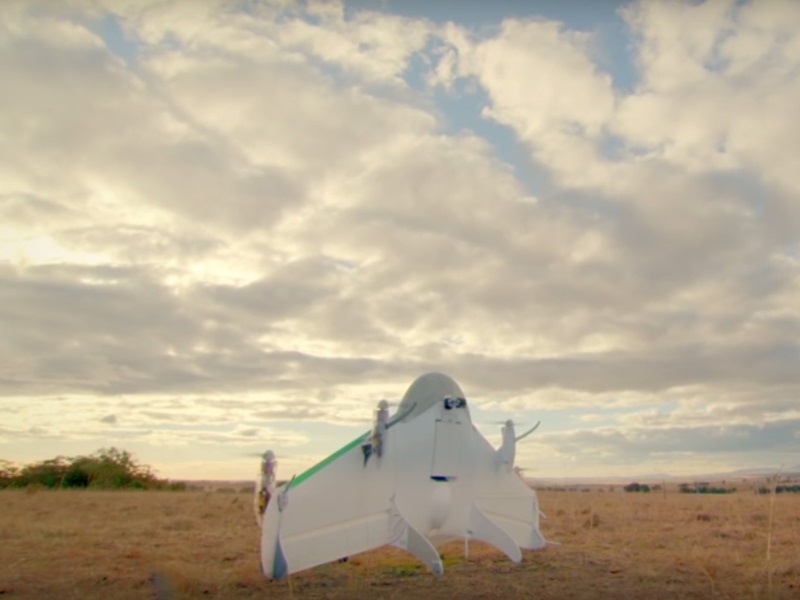- Home
- Internet
- Internet News
- Google Aims to Begin Drone Package Deliveries in 2017
Google Aims to Begin Drone Package Deliveries in 2017

David Vos, the leader for Alphabet's Project Wing, said his company is in talks with the Federal Aviation Administration and other stakeholders about setting up an air traffic control system for drones that would use cellular and Internet technology to coordinate unmanned aerial vehicle flights at altitudes under 500 feet (152 meters).
"Our goal is to have commercial business up and running in 2017," he told an audience at an air traffic control convention near Washington.
Alphabet and Amazon Inc are among a growing number of companies that intend to make package delivery by drone a reality. But drone deliveries are not expected to take flight until after the FAA publishes final rules for commercial drone operations, which are expected early next year.
(Also see: US to Require Registration of Drones)
Two years after initial research began, Project Wing was announced in August 2014 with a YouTube video showing a field test of its most viable prototype in Australia.
The prototype flown in Australia, 1.5 meters (4.9 feet) wide and 0.8 meters (2.6 feet) tall, shares the same four-propeller quad copter design as popular consumer drones, but the company said consumers can expect to see new vehicle types and shapes as the project unfolds.
Inside the United States, Project Wing has conducted testing with Nasa.
Vos, who is co-chair of an FAA task force charged with coming up with a drone registry, said a system for identifying drone operators and keeping UAV away from other aircraft could be set up within 12 months.
"We're pretty much on a campaign here, working with the FAA, working with the small UAV community and the aviation community at large, to move things along," he said.
Vos said a drone registry, which the Obama administration hopes to set in place by December 20, would be a first step toward a system that could use wireless telecommunications and Internet technology including cellphone applications to identify drones and keep UAV clear of other aircraft and controlled airspace.
He said Google would like to see low altitude "Class G" airspace carved out for drones, saying it would keep UAV away from most manned aircraft aside from low-flying helicopters, while enabling drones to fly over highly populated areas.
© Thomson Reuters 2015
Get your daily dose of tech news, reviews, and insights, in under 80 characters on Gadgets 360 Turbo. Connect with fellow tech lovers on our Forum. Follow us on X, Facebook, WhatsApp, Threads and Google News for instant updates. Catch all the action on our YouTube channel.
Related Stories
- Samsung Galaxy Unpacked 2025
- ChatGPT
- Redmi Note 14 Pro+
- iPhone 16
- Apple Vision Pro
- Oneplus 12
- OnePlus Nord CE 3 Lite 5G
- iPhone 13
- Xiaomi 14 Pro
- Oppo Find N3
- Tecno Spark Go (2023)
- Realme V30
- Best Phones Under 25000
- Samsung Galaxy S24 Series
- Cryptocurrency
- iQoo 12
- Samsung Galaxy S24 Ultra
- Giottus
- Samsung Galaxy Z Flip 5
- Apple 'Scary Fast'
- Housefull 5
- GoPro Hero 12 Black Review
- Invincible Season 2
- JioGlass
- HD Ready TV
- Laptop Under 50000
- Smartwatch Under 10000
- Latest Mobile Phones
- Compare Phones
- Realme P4x 5G
- OnePlus Ace 6T
- OPPO A6x 5G
- Samsung Galaxy Z TriFold
- Poco F8 Ultra
- Poco F8 Pro
- Huawei Mate 80 RS Master Edition
- Huawei Mate 80 Pro Max
- Asus ProArt P16
- MacBook Pro 14-inch (M5, 2025)
- Poco Pad M1
- Poco Pad X1
- Just Corseca Skywatch Pro
- Honor Watch X5
- Acerpure Nitro Z Series 100-inch QLED TV
- Samsung 43 Inch LED Ultra HD (4K) Smart TV (UA43UE81AFULXL)
- Asus ROG Ally
- Nintendo Switch Lite
- Haier 1.6 Ton 5 Star Inverter Split AC (HSU19G-MZAID5BN-INV)
- Haier 1.6 Ton 5 Star Inverter Split AC (HSU19G-MZAIM5BN-INV)

















